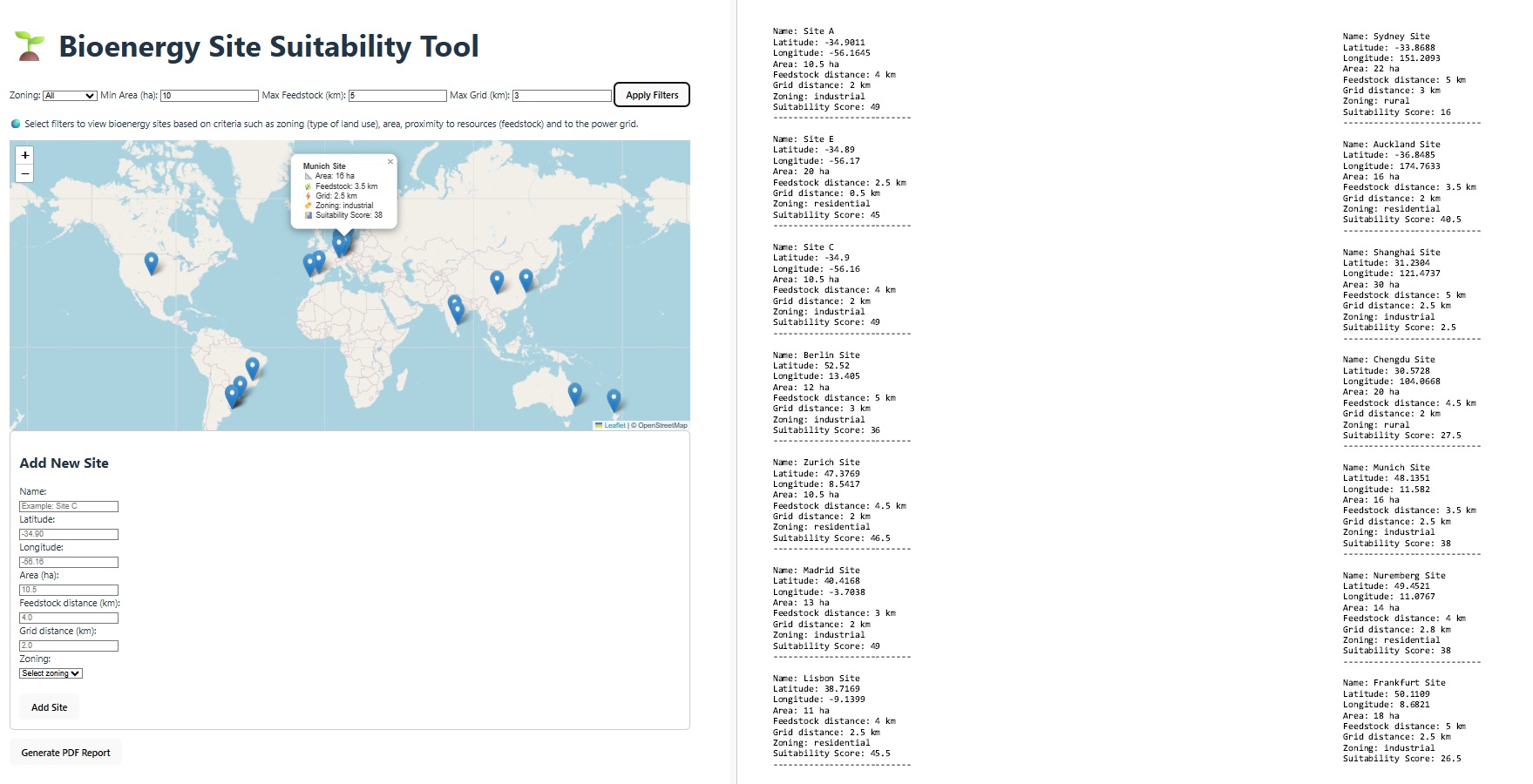Analizador de Viabilidad para Emplazamientos de Bioenergía
Ubicación ideal de una planta de bioenergía según la zonificación
Las zonas industriales son ideales para operaciones a gran escala, aprovechando la infraestructura existente y los diversos flujos de residuos. Las zonas rurales son ideales para proyectos vinculados a la biomasa agrícola o forestal, que a menudo requieren mayor proximidad a la materia prima. Las zonas residenciales son muy restrictivas y solo son aptas para soluciones integradas muy pequeñas debido a los problemas de ruido, olores y tráfico. En definitiva, un estudio de viabilidad detallado es esencial para cualquier proyecto de bioenergía, ya que las condiciones locales y la disponibilidad de recursos son primordiales. A continuación, se presenta un resumen de las características ideales según los tipos de zonificación más comunes:
🔗 Probar Demo (Enlace externo: Puede tardar unos segundos en cargar)| Zonificación | Tipo de planta ideal | Área mínima (ha) | Distancia máx de la Materia prima (km) | Distancia máxima a la red eléctrica (km) |
|---|---|---|---|---|
| Industrial | Cogeneración a gran escala, gasificación, digestión anaeróbica | 5 - 20 | 50 - 150 | < 5 |
| Rural | Digestión anaeróbica, pirólisis en granjas/regiones | 1 - 10 | 5 - 30 | < 10 |
| Residencial | Micro-AD, calefacción de biomasa a pequeña escala (escala muy limitada) | < 1 | En el sitio o < 5 | En el sitio o < 1 |
Esta solución web está diseñada para gestionar, filtrar y visualizar emplazamientos de proyectos de bioenergía en un mapa interactivo, con la posibilidad de añadir nuevos emplazamientos y generar informes en PDF.
Una herramienta para ingenieros y diseñadores que permite:
✅ Seleccionar y mostrar un terreno en un mapa.
✅ Calcular una puntuación básica de idoneidad.
✅ Obtener datos de una base de datos SQLite mediante la API de Flask.
